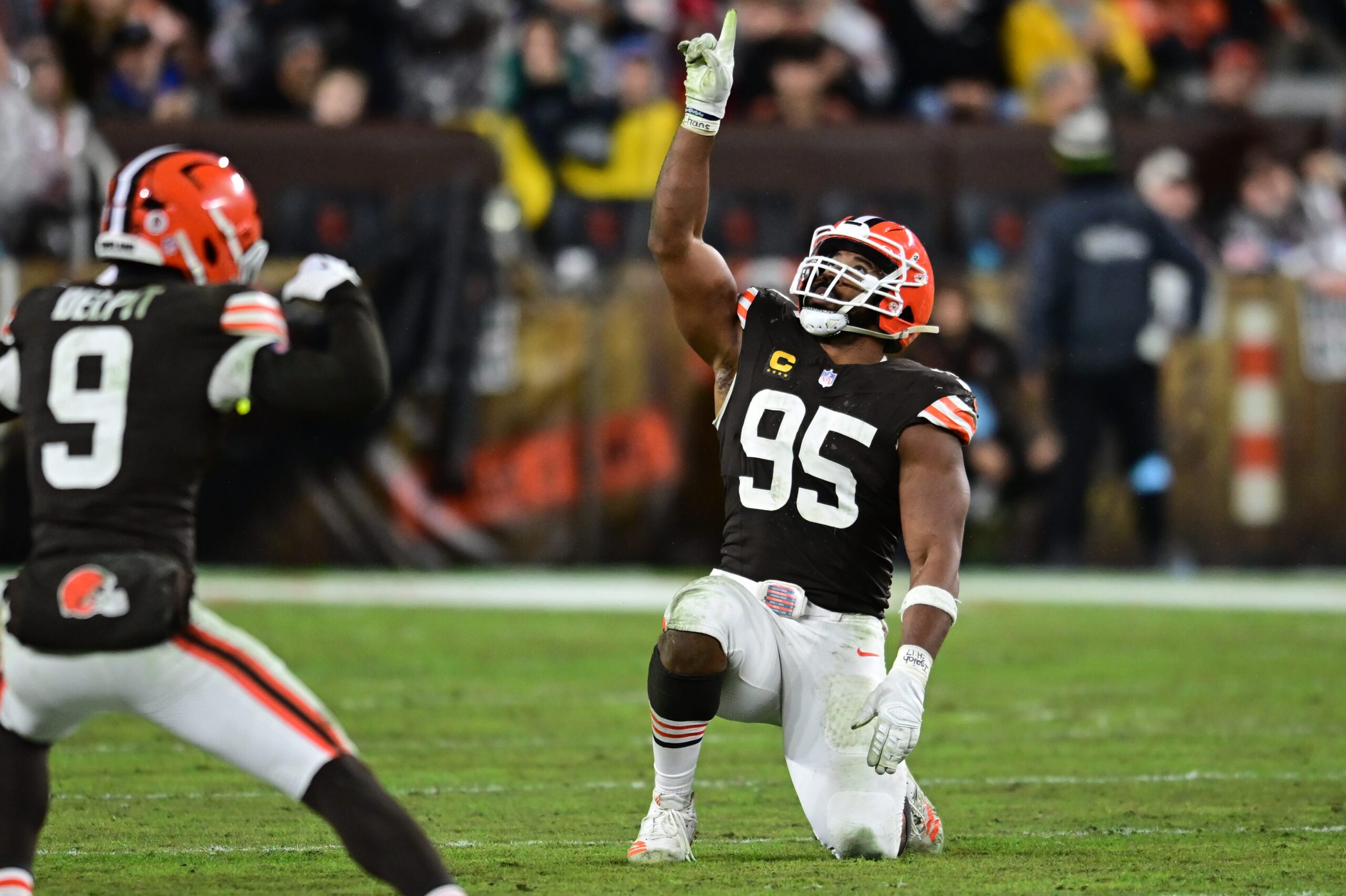
The Garrett Effect: A Ripple Through the NFL After Mega-Deal
Myles Garrett, the Cleveland Browns’ defensive linchpin, has signed a record-breaking contract extension, a move that sends shockwaves throughout the NFL and fundamentally alters the landscape of player compensation. The deal, averaging a staggering $40 million per season and guaranteeing $123.5 million, not only cements Garrett’s position as the highest-paid non-quarterback in league history but also sets a new benchmark for elite defensive players.
The sheer size of the contract signifies a dramatic shift in the perceived value of dominant pass rushers and underscores the Browns’ unwavering commitment to building a championship-caliber team around Garrett. The extension, running through the 2030 season, represents a complete about-face from Garrett’s previously expressed desire for a trade, highlighting the persuasive power of financial security and the allure of long-term stability.
For Garrett, the deal is a resounding victory. He not only breaks the bank but also resets the market for defensive ends, earning nearly $5 million more annually than his closest competitors. This monumental achievement validates his exceptional talent and consistent performance, establishing him as the gold standard for edge rushers across the league.
The Browns, too, emerge as clear winners in this scenario. By securing Garrett’s long-term services, they avoid a potentially devastating rebuild that would have relegated them to mediocrity for years to come. Trading away their best player would have been a crippling blow to the franchise, both on and off the field.
While the Browns have struggled to achieve consistent success since drafting Garrett in 2017, his presence provides a foundation for optimism. He is a cornerstone player, a face of the franchise, and a potential Hall of Famer, giving fans a reason to believe in the team’s future. In a city often starved for success, Garrett represents hope and the possibility of a brighter tomorrow.
However, the impact of Garrett’s contract extends far beyond Cleveland. His lucrative extension has a significant ripple effect on other superstar players, particularly those in similar positions.
Micah Parsons, the Dallas Cowboys’ dynamic linebacker, stands to benefit immensely. As he approaches the end of his current deal and becomes eligible for an extension, Garrett’s contract serves as a powerful bargaining chip. While Parsons’ resume may not yet match Garrett’s, his undeniable talent and impact on the field place him in the conversation for the best defensive player in the NFL. As a result, the floor for Parsons’ next contract will likely be in the same stratosphere as Garrett’s, potentially even surpassing the total value of Maxx Crosby’s deal.
Furthermore, Garrett’s contract puts pressure on other teams to adequately compensate their own star defensive players. The Cincinnati Bengals, for example, publicly stated their intention to make Ja’Marr Chase the highest-paid non-quarterback in NFL history. With Garrett now holding that title, the Bengals will need to offer Chase a deal exceeding $40 million per year to fulfill their promise.
The ramifications of Garrett’s extension also extend to the free agent market. Teams seeking to bolster their pass rush will face a steeper price tag, as the perceived value of elite edge rushers has been dramatically elevated.
For the Cowboys, Jerry Jones’s tendency to delay contract extensions could prove costly. The price for retaining Micah Parsons continues to escalate, potentially forcing the Cowboys to dig deeper into their pockets to secure his long-term future.
Teams that had expressed interest in acquiring Garrett before his extension, such as the Philadelphia Eagles and Washington Commanders, will need to explore alternative options to address their needs at edge rusher. The Eagles, with Josh Sweat and Milton Williams entering free agency, will have to decide whether to re-sign their own talent or pursue other options on the market. The Commanders, possessing significant cap space, may turn their attention to players like Trey Hendrickson, who has been granted permission to seek a trade.
Even the New England Patriots, with the most cap space in the league, must adjust their strategy in light of Garrett’s commitment to Cleveland. The Patriots, who struggled to generate sacks last season, could have greatly benefited from Garrett’s presence, but now must find other avenues to improve their pass rush.
Beyond the financial implications, Garrett’s contract also has competitive consequences. His continued presence in the AFC North guarantees that divisional rivals will have to contend with his disruptive presence twice a year for the foreseeable future. While Garrett’s individual dominance has not always translated into wins against AFC North opponents, his ability to pressure the quarterback and disrupt opposing offenses forces teams to game plan specifically for him.
In conclusion, Myles Garrett’s record-breaking contract extension is more than just a lucrative deal for one player. It’s a paradigm shift that reshapes the financial landscape of the NFL, elevates the perceived value of elite defensive players, and forces teams to reassess their strategies for player acquisition and retention. The "Garrett effect" will be felt across the league for years to come, impacting everything from contract negotiations to free agency to on-field competition. The Browns have made a bold statement about their commitment to winning, and the rest of the NFL is now forced to respond. The game, as they say, has changed.
